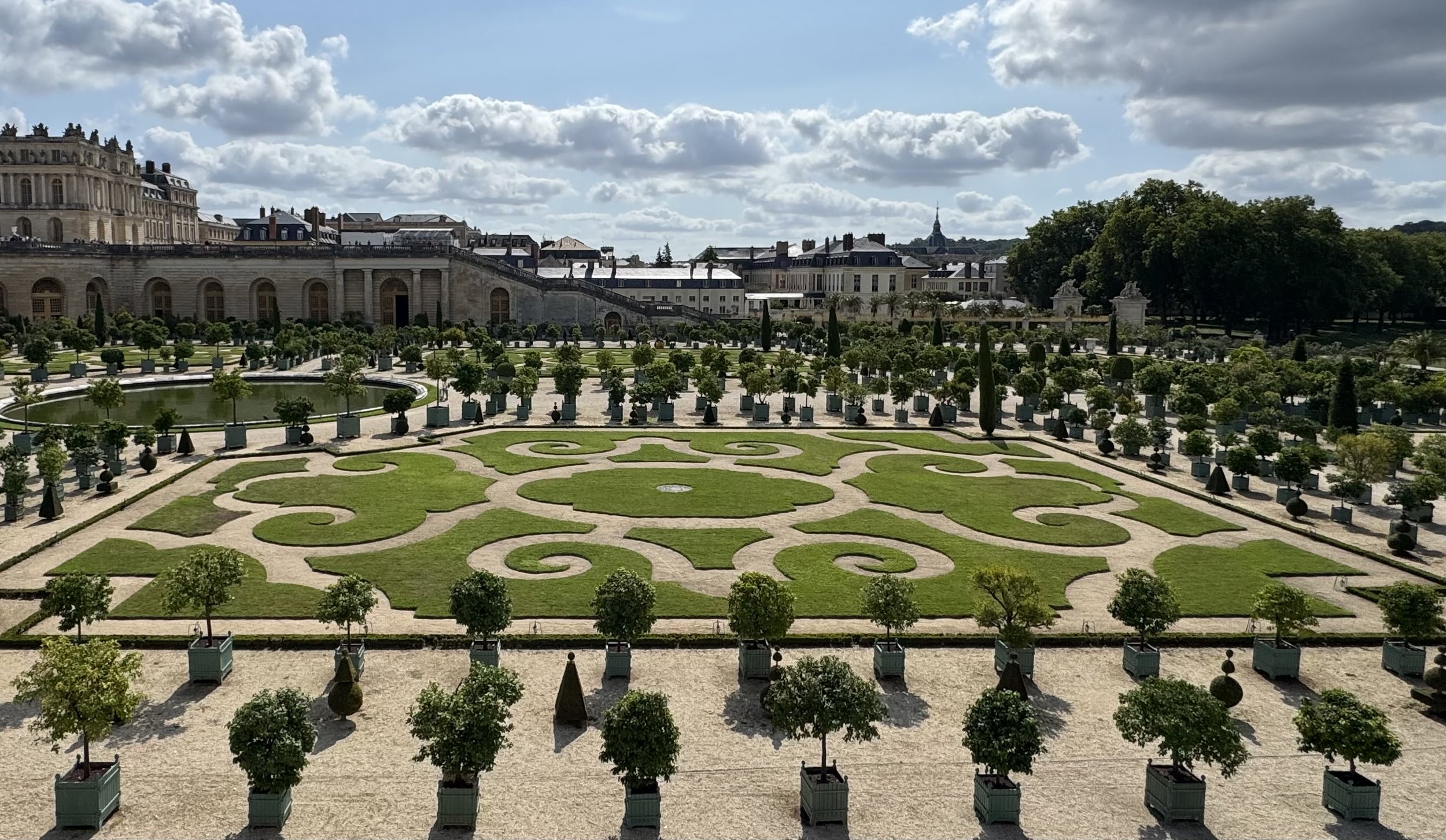How Italian, French, and English Gardens Influence Fashion
Gardens have always been more than spaces of beauty; they are living expressions of culture, politics, and philosophy. In Europe, three iconic garden styles — Italian Renaissance gardens, French formal gardens, and English landscape gardens — have influenced not just architecture and landscape design, but also the visual language of fashion. The shapes, textures, and moods cultivated in these landscapes have found their way into fabrics, silhouettes, and even the way we wear color.
This summer, I visited Paris, a trip that combined my love for travel with my passion for researching fashion and sustainability. One of the moments that stayed with me the most was my day at Versailles. As we walked through the palace and its sweeping grounds, our tour guide explained the differences between French, Italian, and English garden styles. Listening to those descriptions, I couldn’t help but draw parallels to the fashion world. It struck me that fashion is not only a form of individual expression but also a cultural one, reflecting the values, customs, and aesthetics of entire societies.
Italian Gardens: Renaissance Geometry Meets Couture Precision
Italian Renaissance gardens, from the terraces of Villa d’Este to the symmetry of the Boboli Gardens in Florence, were designed as extensions of grand villas. Characterized by structured terraces, axial symmetry, sculpted hedges, and classical statuary, these gardens mirrored the intellectual revival of proportion and harmony.
In fashion, this translates into:
Architectural silhouettes — garments with strong, balanced shapes, such as tailored suits, structured coats, or dresses with precise paneling.
Rich, textural fabrics — brocades, jacquards, and velvets that echo the tactile opulence of stone fountains and manicured greenery.
Classical motifs — laurel wreath embroidery, column-inspired pleats, and marble-like prints.
French Gardens: Grandeur, Ornament, and Theatrical Splendor
The jardin à la française, perfected under André Le Nôtre at Versailles, was a display of royal power. These gardens are about imposing geometry, mirrored ponds, ornate parterres, and long sightlines designed to awe visitors. Standing there, I could see how the discipline and drama of these landscapes have a direct parallel in haute couture, fashion designed to impress from every angle.
Fashion takes its cue from this formality and drama:
Ornamental detailing: embroidery, beadwork, and lace mimicking the arabesques and scrollwork of boxwood patterns.
Opulent palettes: gold, deep reds, and rich blues reminiscent of royal interiors spilling into the gardens.
Grand proportions: voluminous skirts, dramatic trains, and statement accessories that command space like a palace vista.
Think of Dior’s “New Look” cinched waist and full skirt as a fashion version of Versailles’ grand axis, disciplined but designed to impress.
English Gardens: Romantic Naturalism and Effortless Chic
By the 18th century, English landscape gardens, such as the sweeping lawns of Stowe in Buckinghamshire or the numerous parks designed by the renowned landscape architect Lancelot “Capability” Brown, had evolved away from the strict, geometric layouts of earlier periods. Instead, they featured wide, rolling grasslands, irregularly shaped lakes, and strategically placed trees, creating a setting that looked natural but was actually carefully planned.
In fashion, the English garden spirit blooms as:
Fluid, relaxed silhouettes — flowing dresses, soft tailoring, and layers that move naturally.
Botanical prints and earthy palettes — florals, greens, and soft neutrals reflecting meadow wildflowers and weathered stone.
Crafted ease — pieces that feel personal and lived-in, much like a garden path that’s been walked a hundred times.
The English garden influence remains strong in contemporary “cottagecore” aesthetics, which prioritize romantic simplicity over aristocratic display.
Why Gardens and Fashion Intertwine
Garden design, like fashion, is about composing space, directing the eye, and evoking emotion. The Italian garden’s geometry speaks to the precision of tailored garments; the French garden’s grandeur mirrors the opulence of haute couture; the English garden’s naturalism finds kinship with a relaxed, romantic style.
This photo shows a grotto with white marble statues in front of a rocky backdrop, surrounded by greenery in the English style, an Italian-inspired feature placed in Versailles’ French gardens for a dramatic effect. Image credit: Sophia Kohler
My visit to Versailles reminded me that just as gardens reflect the ideals of the societies that created them, fashion does too. From Christian Dior’s Versailles-inspired runways to Valentino’s romantic floral gowns, designers continue to draw from these landscapes, translating clipped hedges into pleats, gilded parterres into embroidery, and rolling meadows into flowing fabrics.
Fashion moves faster than the seasons, but like gardens, its roots are deep, and the dialogue between cultivated landscapes and clothing design continues to flourish. From a perfectly clipped hedge to a field of untamed blooms, the garden remains one of fashion’s richest and most enduring muses.







